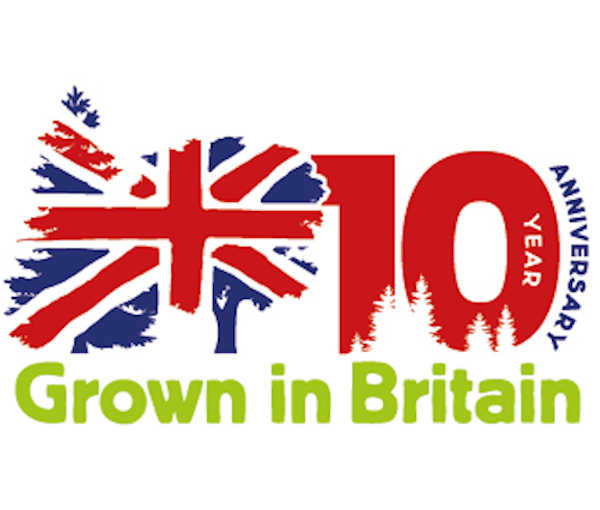Woodburning stoves and open fires add warmth and cosiness to any home, that’s a fact. There’s nothing more relaxing and soothing than sitting by a roaring fire, enjoying the flickering light, crackling sound and distinctive smell. Little wonder, then, that solid fuel appliances in the home are more popular than ever. But do you know what to burn in them?
This is where the Balcombe Estate Sawmill can help. As a renowned supplier of logs in Sussex, we think we know a thing or two about firewood. Over the last 60+ years, we’ve been managing our 1,250 acres of mixed woodland, comprised of ancient semi-natural woodland, plantations on ancient woodland sites and plantation woodlands.
Our logs are cut from hardwood cordwood, typically a mixture of ash, oak, silver birch, beech or alder, seasoned for at least a year. We supply our logs cut to 10” as a standard size, but custom sizes are available to order. We offer a collection or local delivery service and you can place your order by emailing sawmill@balcombeestate.co.uk or by calling the Balcombe Estate Sawmill on 01444 811 446.
If you are considering a real fire or log burner for your home, or you have an underused fireplace and are thinking of using it more, here are a few basics you need to know when it comes to firewood logs.
Hardwood or softwood
Both softwood and hardwood can be used as firewood but they have different properties. Softwood logs such as pine, fir or larch burn quickly. They are easy to light and ideal for use as kindling. Once your fire is established, you should add hardwood logs.
Hardwood, such as oak, ash or beech, has a much denser structure than softwood. This gives the logs a higher heat output and longer burn time. Hardwood logs are heavier and produce more energy than softwood logs, meaning you need less to produce the same heat output and refuel at longer intervals.
Firewood comparison
While logs can be cut from all kinds of trees, it shouldn’t come as a surprise to find out that they don’t all burn in the same way. Before you place your order of logs, it’s a good idea to understand a bit about their differences. Here are the main types of firewood you’re likely to come across:
Ash
Long considered to be the king of the firewoods, ash produces a bright flame, a high heat output, good burn duration and consistent performance, all at a good price point. Ash is a particularly good choice for wood burners.
Beech
Beech logs must be properly seasoned (on account of their high water content) but when they are dry, they display similar properties to ash. Its non-flaking bark makes for less mess in the log basket. Beech briquettes retain heat for hours.
Beech
Birch Birch logs burn fiercely and more quickly than other hardwood logs. They also have a lovely aroma. For fine-tuneable modern stoves, birch provides an excellent fuel choice as well as a great value – no wonder the Scandinavians swear by it.
Oak
Oak is the traditional choice of logs and everyone’s favourite. Oak logs are dense and heavy and burn for hours, though the flame is perhaps less dramatic than for other woods. In terms of burn duration, it’s hard to top oak.
Apple
Applewood logs must be seasoned well. They burn slowly with a small-ish flame and good heat output while producing a lovely smell. The same goes for other fruitwood logs such as pear, plum and cherry.
Pine
Pine is a fast-burning softwood that lights easily and burns with a bright flame, which makes it an excellent fire starter. Its relatively high sap and resin content make it more practical for outdoor use, as the moisture can lead to spitting.
Why ‘seasoning’ is key for firewood
Living trees have a moisture content that is too high for burning. Beech, for example, has a moisture content of 90%, the green moisture content of oak is about 75%, and 50% for ash. Once cut into logs, firewood has to ‘season’ or dry out sufficiently for the moisture content to reduce to less than 20%.
It can take anywhere from 6 months to 3 years for the logs to achieve that level of moisture, and it’s only then that they are ready for the fire. The longer the seasoning time, the drier the logs are, and the hotter they will burn.
You can check if your logs are ready for burning by knocking two together. If you hear a satisfying ‘thwack’, they’re dry enough. Logs that spit and crackle in the fire are not ready – it’s the moisture being released in the fire that makes the noise.
What are kiln-dried logs?
Leaving hardwood to season naturally is an inexact science. Due to environmental variations, you can’t be completely sure that the logs are ready even after 2 years of seasoning.
Enter kiln drying – a drying process in a controlled environment that removes these uncertainties, delivering logs with a moisture content of around 15%. Kiln-dried logs are cleaner, meaning less mess in your house and less build-up in your flue. They burn easily, with a high heat output and without leaving much ash at all. These logs may be more expensive but given the fact that less is needed to produce the same heat, they are excellent value for money.
Find out more
The Balcombe Estate Sawmill should be your first port of call for all your firewood needs, timber supplies and bespoke sawn timber products. Get in touch with our knowledgeable team who are always happy to share their expert knowledge and assist you in any way possible.
